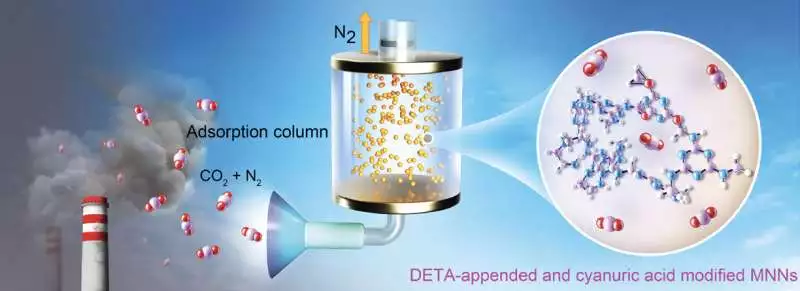UC Berkeley chemists say they've created a simple, and very inexpensive way to capture carbon dioxide using a polymer called melamine, that's far cheaper than metal-organic frameworks. It could capture carbon emissions from smokestacks or tailpipes.
Some 75% of carbon dioxide emissions in the United States come from fossil fuel burning, and while the race to zero emissions by 2050 is primarily focused on replacing fossil fuel use with cleaner, electrified solutions, carbon capture is definitely going to play an important role.
Metal-organic frameworks (MOF), have shown significant promise in this area. The complex shapes of these crystalline structures offer the largest surface area of any known material, and CO2 molecules become trapped in these structures as other molecules pass through.
UC Berkeley researchers created the first carbon-capture MOF back in 2015, and have since refined it to higher levels of efficiency – but for carbon capture tech to be widely deployed, it needs to be super-simple and extremely cheap. "We wanted to think about a carbon capture material that was derived from sources that were really cheap and easy to get," said Professor Jeffrey Reimer, one of the corresponding authors of a new research paper published in the journal Science Advances. "And so, we decided to start with melamine."
Melamine powder costs about US$40 per ton. It's a very common material and a key constituent in things like thermosetting plastics, laminates, whiteboards and wipe-clean Formica kitchen benchtops. The research team combined it with formaldehyde and cyanuric acid, and used a 3- to 7-day condensation polymerization technique, followed by a sonication bath and a cleaning process to create stabilized melamine nanoporous networks.

These networks, according to the team, demonstrated a high adsorption capacity of 1.82 millimoles of CO2 per gram at atmospheric pressure levels. They adsorbed the carbon quickly – within minutes – and showed "extraordinary cycling stability and low regeneration energy." The new material captures CO2 at about 40 °C (104 °F) and releases it at 80 °C (176 °F)
In essence, the researchers argue that this first run at melanine nanoporous networks performs the carbon capture job roughly as well as the first MOFs designed for the job seven years ago – with great potential for improvement and at a far cheaper cost.
There remains the problem that melanine production itself is currently a CO2-emitting process, but the researchers believe this new material could have broad applications in emissions capture. "This work creates a general industrialization method towards sustainable CO2 capture using porous networks," said Haiyan Mao, a UCB Postdoctoral fellow and lead author on the paper. "We hope we can design a future attachment for capturing car exhaust gas, or maybe an attachment to a building or even a coating on the surface of furniture."
"All the practical aspects at the laboratory scale of this material for CO2 capture have been met, and it's just incredibly cheap and easy to make," said Reimer.
The research is open access in the journal Science Advances.
Source: UC Berkeley





